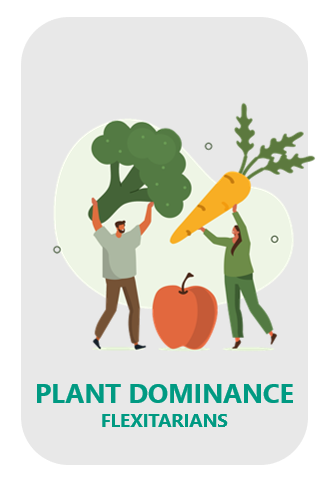Flexitarians helping plant-based food take over the world
The flexitarian trend continues to grow across the globe. More people are looking to moderate from animal products for health, sustainability, and/or ethical purposes. Consumers try to have a healthier and more sustainable lifestyle. This is an important demand driving brands to produce more green and clean products.
Recent numbers show that the plant-based category has increased by 49% since 2020.
This is not only caused by vegans or vegetarians, but even more because of the new group of flexitarians. A flexitarian is a person who has a primarily vegetarian diet but occasionally eats meat or fish. The popularity of plant protein is something that will continue to gain momentum in 2022. This results in the ongoing growth of new categories and health claims as consumers are actively looking to reduce their intake of animal products without having to compromise.
The success of the plant-based category comes from various sources. The most important one is the people’s concern about the environment and their health.

The number of claims around sustainability and innovations as increased up to 80% in 2021.
Some examples of these claims are: ‘70% less plastic’, ‘carbon-neutral’, ‘climate-smart’, and the list goes on. However, claims concerning the health benefits of plant-based products are used 10 times more than environmental claims.
How are brands evolving their communication strategy around plant-based products?
Some companies communicate more on an emotional level. There is a shift from a functional description of products to more of an emotional product description. Some examples: The companies “Oatly” and “Those vegan cowboys”, have a strong way of communicating why dairy is not good for us. The tone of communication is more on an emotional level. Besides that, we also observe communication about new ingredients in the plant-based milk category. For example: the emerging trend of potato milk. This new ingredient brings taste and creaminess to the table.
Furthermore, there is also a huge movement toward hybrid food. These are foods that exists of a mix between both animal and plant-based ingredients.
What will hybrid food look like in the future?
It may look like blending products ourselves, co-branding between companies or brands increasing their offer of hybrid products. In the next upcoming years, there will be a lot of opportunities for hybrid products like these. It’s fair to conclude that the world is quickly evolving and making an everyday shift to a more healthy and sustainable food production.

